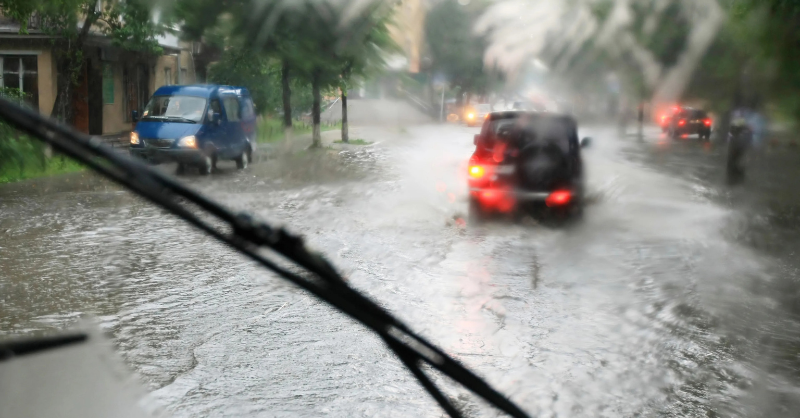How to Act during a Severe Storm
Isolated High-Level Depressions known as DANAS in Spanish, can trigger extreme weather events such as torrential rain, flooding, strong winds and hail, putting people’s safety at risk and causing significant material damage. Knowing how to act in the event of a Dana is crucial to minimise the risks and protect yourself and others. This guide, based on the recommendations of various official bodies, offers practical advice for dealing with a Dana in different environments: city, road, countryside and coast.
In the city
-Stay at home: The main recommendation is to avoid unnecessary travel and stay at home. This reduces exposure to the dangers of the storm, such as flooding, falling objects or traffic accidents.
– Close doors and windows: Keep doors and windows closed to avoid drafts that can attract lightning and to protect the interior of the home from rain and wind.
– Avoid showering during storms: Water conducts electricity, so showering during a thunderstorm increases the risk of electrocution.
– Clear gutters and drains: Make sure gutters and drains are free of obstructions to facilitate water drainage and prevent flooding.
– Take shelter in buildings: If you are outside during a thunderstorm, seek shelter in a solid building. Avoid trees, poles and metal structures.
– Do not cross flooded areas: Never try to cross flooded areas on foot or by vehicle. The force of the water can be greater than it seems and you could be swept away. In addition, it is unknown what dangerous objects may be under water.
On the road
– Avoid driving if possible: If the flood coincides with a planned trip, try to postpone it if possible.
– If you must drive, take extreme precautions. Check the weather information and road conditions: Before leaving, find out about the weather forecast and road conditions.
– Check the DGT and emergency services websites. Reduce speed and increase safety distance.
– Adapt your speed to the weather conditions and increase the safety distance from the vehicle in front. Turn on your dipped headlights
-Drive with your dipped headlights on to improve visibility.
– Do not cross flooded sections: Never try to cross flooded sections with your vehicle. The force of the water can sweep your car away, putting your life and that of the occupants at risk.
– Park in safe places: If the storm forces you to stop your vehicle, choose a safe place, away from rivers, torrents and flood-prone areas.
-Check the condition of your vehicle: Make sure that the tires, windshield wipers and lights are working properly.
– Be extremely careful with the wind: Be especially careful with gusts of wind, especially when exiting tunnels, when overtaking and when crossing paths with heavy vehicles.
In the countryside
– Stay away from rivers, streams and low-lying areas: Avoid areas prone to flooding, such as rivers, streams and low-lying areas.
-Don’t take shelter under trees: During a thunderstorm, don’t seek shelter under trees, as they attract lightning.
– Avoid elevated and exposed areas: Contrary to popular belief, it is not advisable to take shelter in elevated and exposed areas, such as hilltops or ridges, as they are prone to lightning strikes. Look for low, sheltered areas.
– Stay away from metal objects: Keep your distance from metal objects, such as wire fences or fences, which can conduct electricity. On the coast
– Stay away from the beach and low-lying areas: Storm surges can cause strong waves and high tides. Stay away from the beach and other low-lying areas that may be affected.
– Do not park vehicles near the coast: Avoid parking vehicles in areas close to the coast, as they could be swept away by the sea.
Information and communication
– Stay informed: Follow weather updates and recommendations from authorities through the media and social networks.
-Inform your family and friends: Keep in touch with your family and friends to inform them of your situation and make sure they are safe.




